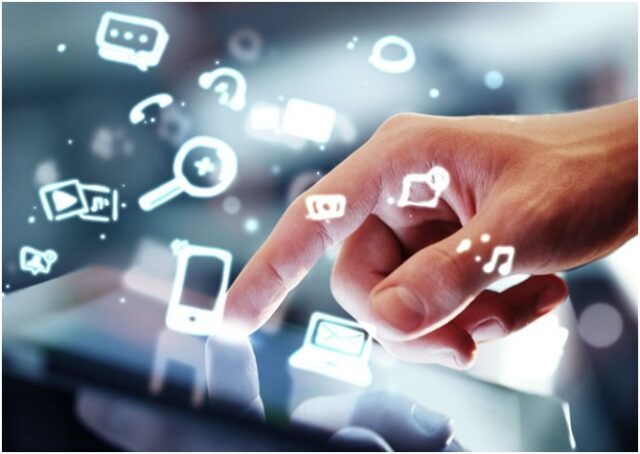The digital revolution has a long and detailed history.
The world wide web only became publicly accessible in the early 90s. And it was the 2000s by the time it was available to most of the developing world.
The invention of the world wide web is a major reason why globalisation and outsourcing are so successful today. As companies leverage technology to be as high performing and profitable as possible.
Today, we have emerging technologies like IoT, AI, VR and automation. Which are driving yet another change in the way business is being conducted.
Different Industries that Used Tech to their Advantage
The retailer Moda Operandi was able to drastically improve its customer service using a personalisation engine. Enabling one stylist to work with as many as 300 customers at once.
Adobe Target automated personalised ads, also creating experiments to determine features customers might find the most compelling. This allowed marketing departments to test their ideas without contacting IT for help.
Bloomsbury.ai is a startup in London. It is expected to release some technology which enables people to carry out complex data analytics without needing any knowledge of programming. Something which could be used among many different industries.
There will also be increased incorporation of ‘man and machine’ in the future. For example, better crop yields through precision agriculture, or automation by Amazon to allow next day delivery.
Robots can be used to perform surgery, assist customers in a store or even deliver items to hotel rooms. Similarly, customer experience could soon be automated.
For example, barcode readers which allow customers to order groceries from home. Or entire home automation and robots that can wash, dry and fold your laundry!
Workforce Improvements
GE intends to shift from a typical Global 2000 company to a startup mindset. The new approach, called ‘FastWorks’, will attempt to make smarter decisions and remain as close as possible to customers.
Employees will need to make quick changes to projects, while continual training will provide skills for staff to thrive. These new approaches allowed them to build a regulation-compliant diesel engine for a client almost two years quicker than a competitor.
A high-end refrigerator was also created in under one year, which sold twice as well as previous models.
Similarly, Xerox used people analytics in its call centres to determine the right roles for the right personality. The result? Improved staff satisfaction and lower hiring and retention costs.
Tech-Driven Business Model
Companies like Google, Amazon and Alibaba can attribute their success to the fact they are based on groundbreaking platforms. They’re built on the foundation of using the cloud, plus other types of technology like API’s, mobile development platforms and IoT.
Philips Healthcare is another company using a similar business model, with it’s Philips HealthSuite platform. It uses three different cloud providers which it attributes to its speed, global reach and scale, resulting in better market opportunities.
Philips‘s mission is to re-invent the healthcare sector. Using technology, it will be able to process vast amounts of data across devices, patients and sensors to tackle immense global challenges.
Digital Ecosystems and Disruption
More and more manufacturers are building ‘connected’ cars, somewhat fueling a much larger ecosystem. Other countries are following suit, offering things like mobile hotspots, infotainment and car-sharing, among other things.
So, instead of just cars, manufacturers are engaging with customers in many ways, through things like safety, diagnostics and software upgrades.
In the insurance industry, data will be able to be gathered directly from vehicles, allowing the launch of new services like pay per mile insurance. This is particularly important considering driverless cars are likely to be a reality in only a couple of years.
A big brand, like Google or Tesla will soon offer cars that don’t contain gas pedals or even steering wheels!
Similarly, Uber was originally a mobile device platform, initially intended as an ecosystem of drivers and cars to disrupt the taxi industry. Uber now realises this type of technology can disrupt other sectors like healthcare.
Using a network of customers and vehicles, plus a skilled workforce, vaccinations and flu jabs can be given on demand. This suddenly gives other hospitals and pharmacies throughout the US an unexpected competitor.
GE is another company realising the potential of the ecosystem.
Traditionally building things like wind turbines, it has now partnered with large energy companies to analyse and enhance their energy output. GE also builds locomotives, which are now interconnected, enabling transportation to grow, while improving fuel efficiency and supply chains.
iGaming
This industry is increasingly making use of cutting-edgetechnology like augmented reality and Blockchain. Blockchain casinos are increasing in popularity as they are often better in terms of payouts, winnings and overall game outcomes which can be found at sites like Virgin Games.
Games are becoming more accessible as there are no barriers associated with various flat currencies. Many of the essential processes are automated, plus, good transparency means there’s little risk of exploitation of loopholes.
The Benefits and Drawbacks of the Technological Revolution
Many industries are now conducting business in new and exciting ways, thanks to innovative technologies.
Internal departments, like IT, marketing and customer service, are all benefiting. In other cases, new technology is making existing roles easier or replacing them entirely with automation.
However, in many cases, industries using new technology often benefit other people and the environment. For example, iGaming, which increasingly relies on Blockchain to make payments easier.
The consequence, of course, is that this often disrupts traditional industries, perhaps putting them at risk of becoming obsolete in the not too distant future.




